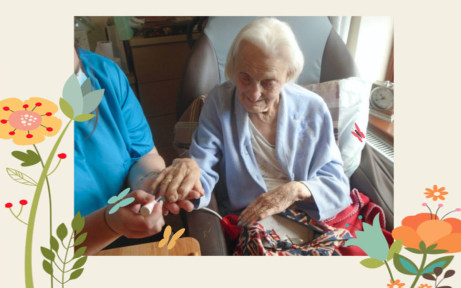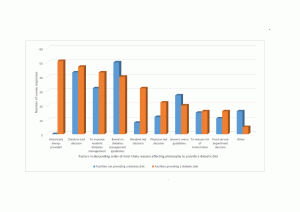Diabetes Care In Care Home And Residential Settings

Diabetesin Care Homes
Despite this, progress in caring for older people with diabetes in a residential care setting has been slow. all people with diabetes should have access to the same level of high quality care, whether they live at home or in residential care. earlier this year, through the publication of new clinical guidelines, a task and finish group. An increasing number of people require insulin to manage their diabetes, many of them in supported environments such as residential care homes. community nursing teams are likely to have a growing caseload of care home residents who require diabetes care, including insulin injections, and many unregistered practitioners are being asked to take. An increasing number of people require insulin to manage their diabetes, many of them in supported environments such as residential care homes. community nursing teams are likely to have a growing caseload of care home residents who require diabetes care, including insulin injections, and many unregistered practitioners are being asked to take.
Clearly, circumstances of the inpatient setting are not the same as that of outpatient. the patient may have an infection or alterations in diet or activity, or be on medications significantly impacting glucose control. the primary team or a diabetes specialist must be involved in the ongoing diabetes care in collaboration with the patient. In addition, undiagnosed diabetes in residential care may be a risk factor for the development of hyperosmolar nonketotic coma and increased mortality (3,4). few studies have investigated the prevalence of diabetes in residential care diabetes care in care home and residential settings settings.
Knowledge and skills to give the right care to people with diabetes, or to delegate insulin administration. in 2010 diabetes uk published a document to improve standards of care in care homes (‘diabetes in care homes: awareness, screening, training) to improve the standards of care within residential settings and to. Diabetes care in care home and residential settings article in british journal of community nursing 23(10):510-513 · october 2018 with 11 reads how we measure 'reads'. Diabetes is ranked second behind congestive heart failure as the primary diagnosis at entry into home care. it is the leading diagnosis if primary and secondary diagnoses are combined. 1 in addition, the majority of patients referred to home care are over the age of 65 years. the projected increase in the size of this age group in future years, as well as the projected increase in the. Objective —to determine the prevalence of known and undetected diabetes diagnosed either by an elevated fasting baseline sample or by a 2-h post–glucose load sample in a group of residents of care homes in an urban-district setting. research design and methods —we completed individual interviews with patients and caregivers in 30 care homes (both residential and nursing homes) in two.
If you or a loved one with diabetes happen to be headed to a nursing home, it's pretty bad news: diabetes care in nursing homes sort of constitutes the perfect storm. any energy and repeating the cycle of school-home-play-eat-sleep that eventually leads kids developing various diseases at the young age such as diabetes care in care home and residential settings heart disease, blood pressure and diabetes parents need to restructure their approach in taking good care of their health by that, parents will need
The england-wide care home diabetes audit, published earlier this year, revealed a lack of assessment, monitoring and specialist care for people with diabetes who live in nursing and care homes. many homes are not systematically screening residents for diabetes nor monitoring the blood glucose levels of those with the condition. Of diabetes care in residential settings. this covered both private and nhs-run care homes. diabetes uk has produced this report to highlight findings and diabetes care in care home and residential settings make a number of recommendations for improvement in the commissioning and delivery of high quality diabetes care for residents of care homes:. Diabetes is more common in older adults, has a high prevalence in long-term care (ltc) facilities, and is associated with significant disease burden and higher cost. the heterogeneity of this population with regard to comorbidities and overall health status is critical to establishing personalized goals and treatments for diabetes. the risk of hypoglycemia is the most important factor in.
The risk of covid-19 entering a care home was just over six times higher in care homes that employed between 11 and 20 non-care workers, nearly 10 times higher diabetes care in care home and residential settings in homes employing 21-30 non care.
All home care patients with diabetes should be referred to an optometrist or ophthalmologist annually for a dilated eye exam. polypharmacy. home care nurses have the unique opportunity to view patients' home settings and thereby record an inventory of all the diabetes care in care home and residential settings medications a patient may be taking. The association's position statement care of young children with diabetes in the child care setting and child care brochure, children with diabetes & the child care setting, helps parents and guardians to understand legal protections in the child care setting. our child care tip sheet can help parents and guardians secure a safe and healthy.
Diabetescare Devices Market By Type Patient Care
Dublin, july 2, 2020 /prnewswire/ -the "diabetes care devices market by type (smbg, cgms, lancets, insulin pumps, insulin pens, insulin syringes, mobile apps), patient care settings (hospitals. Transition between inpatient hospital settings and community or care home settings for adults with social care needs, nice website (december 2015) you can also access summary guides for this topic. england-wide care home diabetes audit (spring 2014) (pdf, 1. 6mb) older people with type 2 diabetes (2012) (pdf, 483 kb).



2. residents with diabetes must have a personalised diabetes care plan in their notes (in addition to other standard care plans). this must include key roles, responsibilities, targets, outcome measures and any arrangements for specialist review. 3. there should be a diabetes champion or diabetes key worker within each care home. 1 good practice guideline for residents with diabetes in care homes for: g. ps, nurses, care staff, care home managers, chefs and other staff working within care homes aim: to set standards and provide guidance to support high quality and safe care for residents with diabetes living in care homes. these standards should be used to develop new and review current procedures and should act as a guide.
7 diabetes care devices market, by patient care settings. 7. 1 introduction 7. 2 self/home healthcare 7. 3 hospitals & diabetes specialty clinics 8 diabetes care devices market in bric countries. 8. (appropriate to use in a rural setting) to improve diabetes care for residents in three care homes in powys (one nursing home, one residential home and one dual care home). methodology action research studies social systems with the aim of changing them. it allows the researcher to work with the community to define. Diabetes care in care home and residential settings. gregory s(1). author information: (1)diabetes specialist nurse, east kent hospitals university foundation trust. an increasing number of people require insulin to manage their diabetes, many of them in supported environments such as residential care homes. Background: diabetes is increasing in prevalence and complexity in the care home setting, affecting up to a quarter of care home residents. health outcomes for these residents are impacted by management of the disease, health care professionals (hcps)' decision-making skills within the care home setting, and access to specialist services.
Comments
Post a Comment